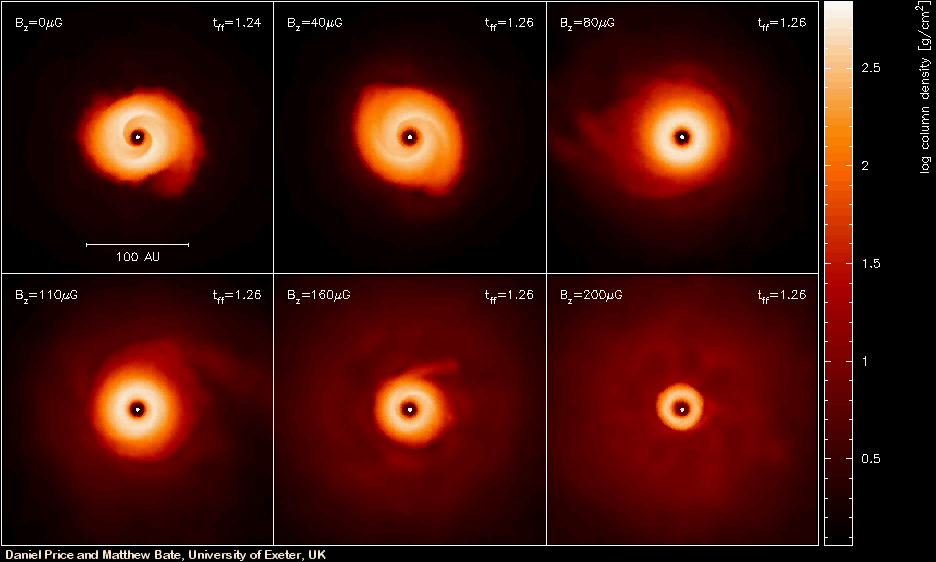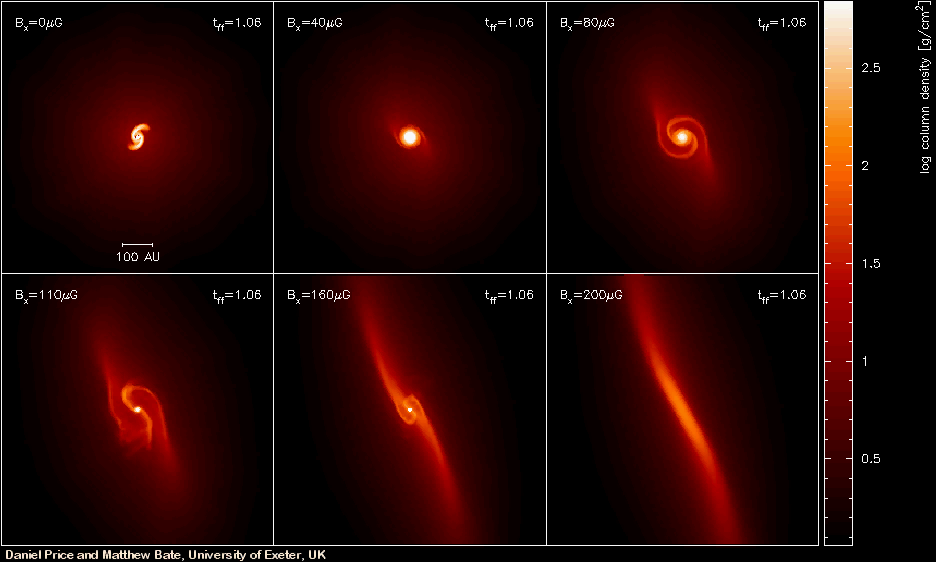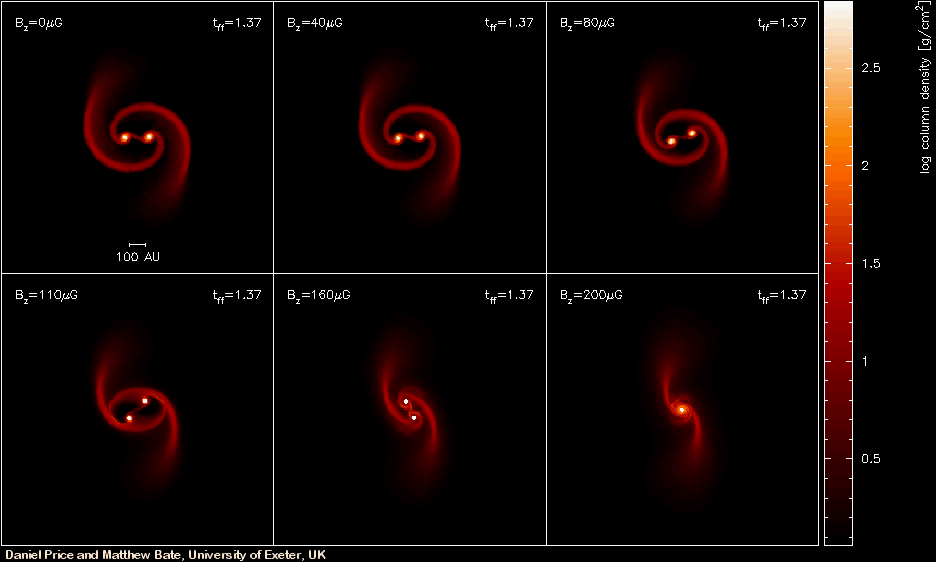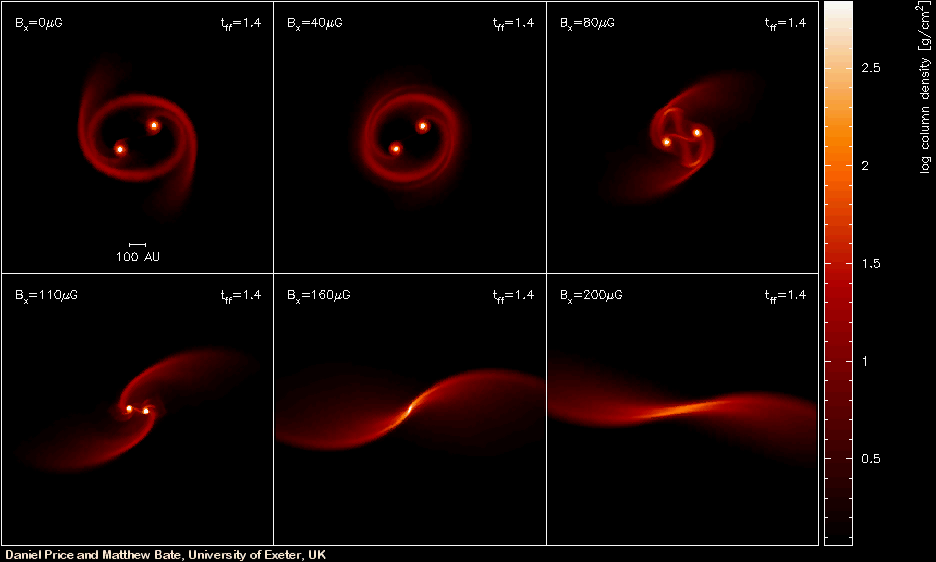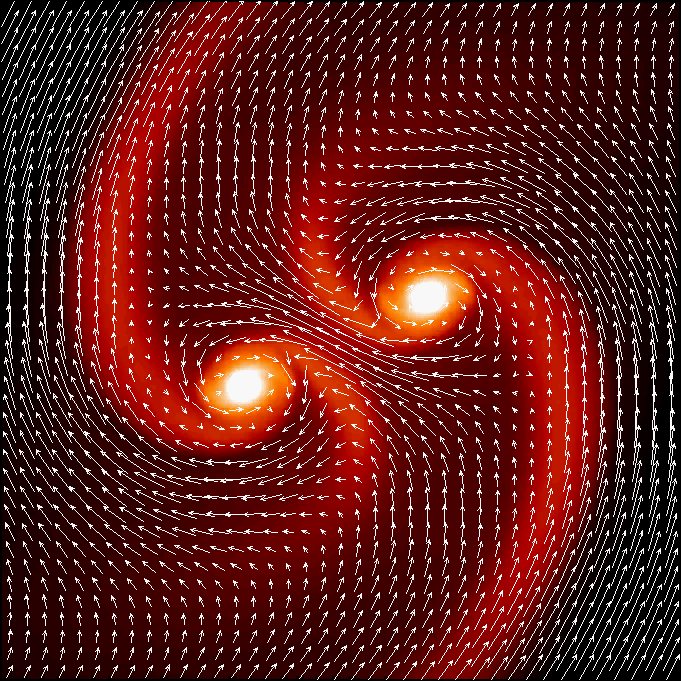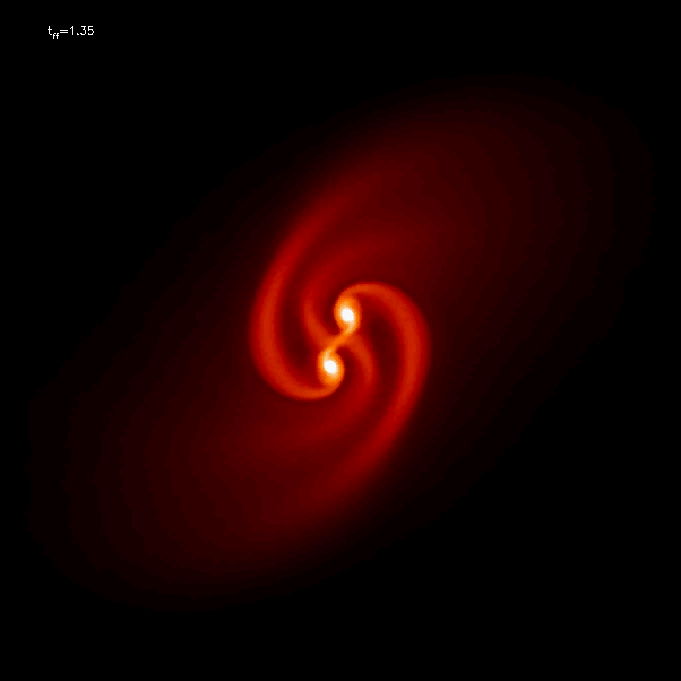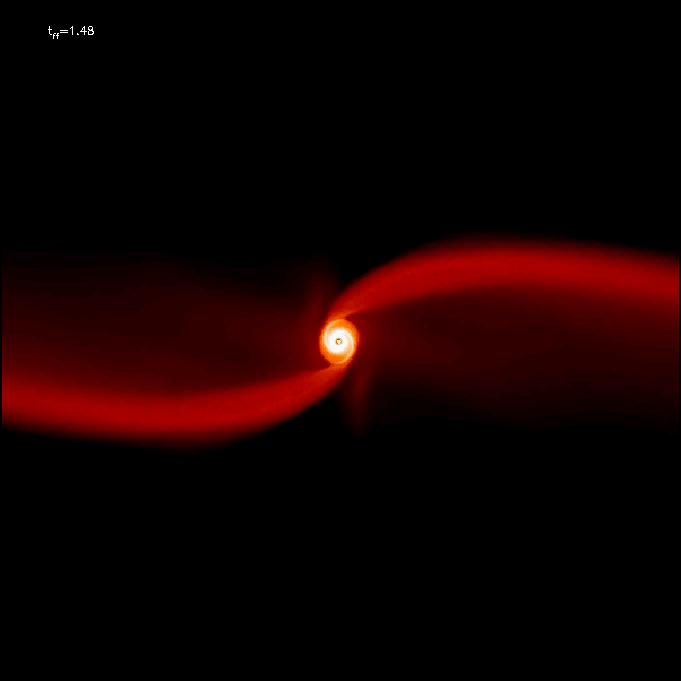The impact of magnetic fields on single and binary star formation
Daniel J. Price and Matthew R. Bate
School of Physics, University of Exeter, Stocker Rd, Exeter EX4 4QL, UK
Accepted [13th February 2007] for publication in Monthly Notices of the Royal Astronomical Society
A non-technical description of this work can be found on the research page. See
below for movies
Abstract
We have performed magnetohydrodynamic (MHD) simulations of the collapse and fragmentation of molecular cloud cores using a new algorithm for MHD within the smoothed particle hydrodynamics (SPH) method, that enforces the zero magnetic divergence constraint. We find that the support provided by magnetic fields over thermal pressure alone has several important effects on fragmentation and the formation of binary and multiple systems, and on the properties of massive circumstellar discs. The extra support suppresses the tendency of molecular cloud cores to fragment due to either initial density perturbations or disc fragmentation. Furthermore, unlike most previous studies, we find that magnetic pressure plays the dominant role in inhibiting fragmentation rather than magnetic tension or magnetic braking. In particular, we find that if the magnetic field is aligned with the rotation axis of the molecular cloud core, the effects of the magnetic field on fragmentation and disc structure are almost entirely due to magnetic pressure, while if the rotation axis is initially perpendicular to the magnetic field, magnetic tension plays a greater role and can actually aid fragmentation. Despite these effects, and contrary to several past studies, we find that strongly-perturbed molecular cloud cores are able to fragment to form wide binary systems even in the presence of quite strong magnetic fields. For massive circumstellar discs, we find that slowing of the collapse caused by the magnetic support decreases the mass infall rate on to the disc and, thus, weakens gravitational instabilities in young massive circumstellar discs. This not only reduces the likelihood that they will fragment, but also decreases the importance of spiral density waves in providing angular momentum transport and in promoting planet formation.Paper
[ pricebate.pdf (1.6Mb), see all files]
Conference Proceedings
"The effect of magnetic fields on the formation of circumstellar discs around young stars", submitted to the special edition of Ap& SS on the 5th Stromlo symposium on Discs, Winds & Jets, eds. Bicknell et al.[ price_stromlo06.pdf (658kb), see all files]
Movies
Movies and images are copyright (c) 2007 Daniel Price and Matthew Bate.
Use is free for non-commercial purposes provided due reference is given.
